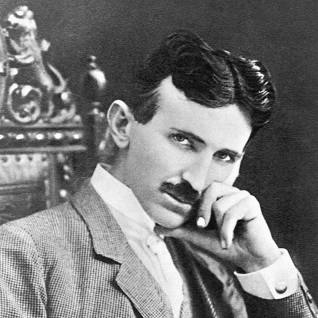
Nikola Tesla
Among the illustrious names in scientific history, Nikola Tesla stands as an enigmatic, yet deeply influential figure. As a prolific inventor and forward-thinking engineer, Tesla’s work provided the backbone for modern electric power systems and established foundational concepts in electromagnetism. His life journey, innovations, and scientific philosophies are shrouded with fascinating tales and curious facts, providing an intriguing study of one man’s legacy that extended far beyond his time.
Nikola Tesla Life
Born in Smiljan, a small village in what is now Croatia, on July 10, 1856, Tesla was the fourth of five children in his family. His father, Milutin Tesla, was a Serbian Orthodox priest, and his mother, Djuka Mandic, was an ingenious woman known for her talent for making home craft tools. She never had a formal education, but her inventiveness and memory had a profound influence on young Nikola, who later credited her genetic influence for his eidetic memory and creative prowess.
Nikola Tesla Early Years
Tesla was homeschooled in his early years, where his curious mind began to reveal its potency. He had a fascination with solving problems and soon developed a fascination for mathematics and physics. His interests were primarily self-directed, as he could perform integral calculus in his mind, which led his teachers to believe he was cheating. This affinity for mental calculations and innate understanding of mathematical concepts was an early indication of Tesla’s exceptional mind.
In 1875, Tesla enrolled at the Austrian Polytechnic in Graz on a Military Frontier scholarship. Here, he studied various subjects, but his passion for electrical engineering took the forefront. Tesla’s idea of an induction motor that would run on alternating current originated during his time at the Austrian Polytechnic, an idea that he would carry with him to America.
In 1881, Tesla moved to Budapest to work at the Central Telephone Exchange as a chief electrician. He made numerous improvements to the Central Station equipment and claimed to have perfected a telephone repeater or amplifier, which was never patented nor publicly described.
In 1884, Tesla sailed to New York with four cents in his pocket, a few of his own poems, and calculations for a flying machine. He started working at the Edison Machine Works in New York City but parted ways with Edison due to conflicting views, particularly on the use of alternating current (AC) and direct current (DC). This divergence led to the historic “war of the currents,” with Tesla’s AC emerging victoriously as the worldwide standard for power transmission.
Nikola Tesla Partnership
Tesla joined hands with George Westinghouse, who understood the potential of AC, marking the beginning of a fruitful partnership. The highlight of their collaboration was the 1893 Chicago World’s Fair, where they lit up the fair using alternating current, proving to the world the superiority and safety of AC.
Beyond his work with electricity, Tesla’s explorations spread across various scientific domains. He developed a high-frequency, high-voltage transformer known as the Tesla Coil. It became a fundamental component in the development of radio technology. His proposed concepts for a “World Wireless System,” although never fully realized, anticipated the creation of the modern smartphone and wireless internet.
Tesla was a man of eccentric habits and unique quirks. He had a photographic memory and could speak eight languages. He had a peculiar aversion to pearls and round objects, and he claimed to have a heightened sensitivity to light and sound. His peculiarities, eccentricities, and unconventional lifestyle often overshadowed his scientific contributions during his time.
Nikola Tesla Project
His project of the Wardenclyffe Tower, aimed at providing free global energy, was the pinnacle of his vision but ultimately led to his financial ruin when JP Morgan withdrew funding. Tesla’s later years were marked by financial difficulties and a gradual retreat from the scientific community. He died alone in his room at the New Yorker Hotel on January 7, 1943, at the age of 86.
Despite his extraordinary contributions, Tesla’s life was fraught with challenges and obscurity. He spent much of his life underappreciated and in financial strain. However, in the years following his death, his work has received widespread recognition, leading to a resurgence of interest in his life and inventions. His life is a testament to the power of innovation, the strength of imagination, and the unwavering belief in one’s capabilities.
Conclusion
In conclusion, Tesla’s life and work remain a beacon of inspiration and curiosity. His theories, inventions, and scientific contributions have shaped the course of history and continue to influence modern scientific and technological advancements. Tesla’s story reminds us that the quest for knowledge transcends time and space, and the fruits of such pursuits often bloom long after the gardener is gone. As we bask in the glow of the electric light and enjoy the conveniences of wireless technology, we honor the genius and vision of Nikola Tesla, the overlooked genius who lit the world.
By: Richard B Vadakkan
Write and Win: Participate in Creative writing Contest & International Essay Contest and win fabulous prizes.


